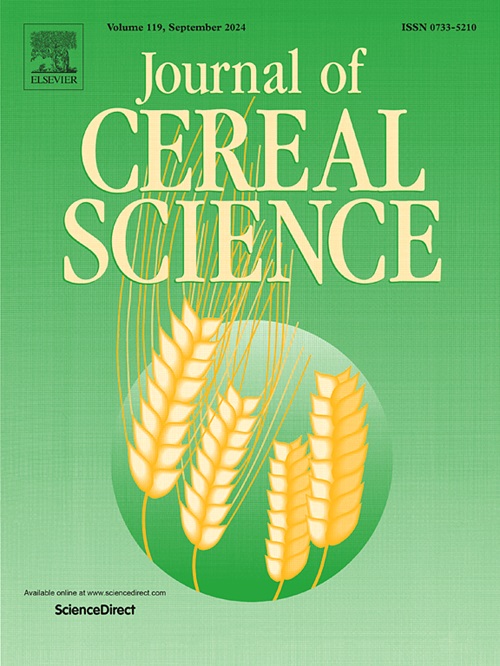Individual and combined effects of cold plasma and enzymatic hydrolysis modification on soluble dietary fiber in wheat bran: Structural, physicochemical and functional properties
IF 3.7
2区 农林科学
Q2 FOOD SCIENCE & TECHNOLOGY
引用次数: 0
Abstract
The individual and combined effects of cold plasma and enzymatic hydrolysis modification on the yield, structural, physicochemical and functional properties of soluble dietary fiber (SDF) derived from wheat bran were investigated. The results indicated that enzymatic hydrolysis and combined modification (cold plasma followed by enzymatic hydrolysis) significantly enhanced the yield of SDF to 15.08 % and 14.65 %, respectively. In terms of structure, all three modifications resulted in partial cleavage of glycosidic and hydrogen bonds, leading to the reduction in the molecular weights of SDFs. The cold plasma-modified SDF displayed a loose lamellar microstructure with small pores, while honeycomb-like pores were observed on the surface of SDF modified by two others. The combined-modified SDF exhibited the most significant structural alterations, which resulted in its lowest viscosity and highest water solubility in all tested SDF. Furthermore, the cold plasma-modified SDF demonstrated the highest α-amylase inhibition ability and bile salt adsorption capacity; while the combined-modified SDF showed the best performance in glucose adsorption capacity, cholesterol adsorption capacity and antioxidant capacity. In conclusion, the combination of cold plasma and enzymatic hydrolysis is a promising strategy for improving not only the yield but also the physicochemical and functional properties of SDF in wheat bran.
冷等离子体和酶解改性对麦麸可溶性膳食纤维的单独和联合影响:结构、理化和功能特性
研究了冷等离子体和酶解改性对麦麸可溶性膳食纤维(SDF)产量、结构、理化和功能特性的单独和联合影响。结果表明,酶解和联合修饰(冷等离子体+酶解)显著提高了SDF的产率,分别达到15.08%和14.65%。在结构上,这三种修饰都导致糖苷键和氢键的部分断裂,导致sdf分子量的降低。冷等离子体修饰的SDF表面呈松散的层状微观结构,气孔较小,而另外两种修饰的SDF表面出现蜂窝状气孔。复合改性后的SDF结构变化最为显著,其粘度最低,水溶性最高。此外,冷血浆修饰的SDF具有最高的α-淀粉酶抑制能力和胆盐吸附能力;而复合改性的SDF在葡萄糖吸附能力、胆固醇吸附能力和抗氧化能力方面表现最好。综上所述,冷等离子体与酶解相结合不仅可以提高小麦麸皮中SDF的产量,还可以提高其理化性质和功能特性。
本文章由计算机程序翻译,如有差异,请以英文原文为准。
求助全文
约1分钟内获得全文
求助全文
来源期刊

Journal of Cereal Science
工程技术-食品科技
CiteScore
7.80
自引率
2.60%
发文量
163
审稿时长
38 days
期刊介绍:
The Journal of Cereal Science was established in 1983 to provide an International forum for the publication of original research papers of high standing covering all aspects of cereal science related to the functional and nutritional quality of cereal grains (true cereals - members of the Poaceae family and starchy pseudocereals - members of the Amaranthaceae, Chenopodiaceae and Polygonaceae families) and their products, in relation to the cereals used. The journal also publishes concise and critical review articles appraising the status and future directions of specific areas of cereal science and short communications that present news of important advances in research. The journal aims at topicality and at providing comprehensive coverage of progress in the field.
 求助内容:
求助内容: 应助结果提醒方式:
应助结果提醒方式:


